 |
 |
 |
 |
 |
<< subjects
>> |
 |
 |
20.-
Idahoan Basques
20.1
BOISE AND GERNIKA
No state in the Union is more associated with the Basque phenomenon
than Idaho. Basques today are an integral part of the social fabric,
especially in Boise. The Secretary of State, Pete Cenarrusa, is
himself an Idahoan-Basque. Since 1990 Boise and Gernika have been
sister cities. Idaho achieved statehood in 1890 along with the first
Basques arriving there around the same time. By 1912 some of the
pioneers, such as John Achabal, Benito Arregui, John Echebarria,
and Juan Yribar, were already settled and had property in the city.
|
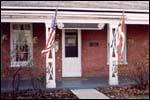 |
 |
|
20.2
BASQUE PRIESTS
A local newspaper related in 1916 how another three Basques, who
had set out working on their own, had established themselves in
sheep operations. In 1910 the Basque community found itself in a
position to request a Basque-speaking priest. The request was conveyed
by the Bishop of Boise to the Bishop of Vitoria-Gasteiz, and in
1911 Boise received father Bernardo Arregui of Tolosa as first Basque
chaplain. Later on, Fathers Aldasoro, Recalde, and Garatea succeeded
him. (Since 1961, also the Diocese of Bayonne has maintained a chaplain,
in California. Aita Jean-Leon Luro was the first to hold the post
followed by Jean Chalet, Guillaume Copentipy, Jakes Sallaberremborde,
Jean-Pierre Cachenaut, Jean-Pierre Etcheverry, Jean Elizagaray,
and Aita Martxel Tillous, the current Basque chaplain )
|
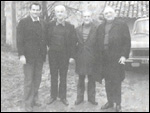 |
20.3
BOISE BASQUE OSTATUAK
In 1912 the Modern Rooming House of Mateo Arregui was the home address
of no fewer than 238 Basque herders who used it to receive mail and
as a place to leave belongings while they spent long periods in the
mountains. Such situations were common in the ostatuak. Over the years
Boise came to have not less than thirty ostatuak, while there were
more than seventy in the entire state of Idaho. In Boise, many of
them were located in the neighborhood close to where the Basque Block
and the Basque Center are located today. Other hotels declared historical
sites, in the same area include, the Anduiza (preserved with its own
enclosed pelota court), the Cyrus Jacobs-Uberuaga (today part of the
Basque Museum of Boise), and the Valencia, owned by the Ysursa family. |
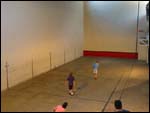 |
|
20.4
A BASQUE MUSEUM & CULTURAL CENTER
Boise has an influential Basque community today with years of experience
in organization. In 1908 they set up a Mutual Aid Society, providing
insurance against illness and funeral expenses, prior to the existence
of social security. The current Basque Center was erected in 1951.
It has a large assembly hall, various rooms, bar, and offices. There
are about 850 members. Next to it, the Basque Museum & Cultural
Center is open daily to exhibit the lifestyle, tools, and other
ethnographic and cultural elements of the Basque-American population
of the west. The Museum also serves as an umbrella to other Basque
entities. It promotes and collaborates with other groups such as
the Boise ikastola, Euskara classes for adults, in the music school
Txantxangorriak, and the Basque choir Biotzetik.
|
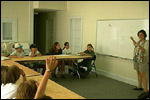 |
|
20.5
MANY ACTIVITIES
Basque music groups include the historic Jim Jausoro Band, the folk
singers Gaupasa, txistularis such as Cathy Clarkson, Edu Sarria,
or Janice Mainvil, Dan Ansotegui's trikitixa, the trikitixa group
of the Txantxangorriak school, and the actual Biotzetik choir. Restaurants
include the Oñati, Epi's, and the Gernika. There are firms
importing and distributing Basque products, such as Basque Country
Imports and The Basque Market. Other towns such as Gooding, Mountain
Home, and Caldwell have Basque associations, dance groups, or restaurants.
Many others had ostatuak and even pelota courts. On August 24 Mountain
Home reinaugurated its historic handball court, which was originally
built in 1911.
|
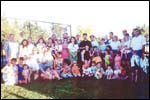 |
|
|
 |
 |
 |
|
|





